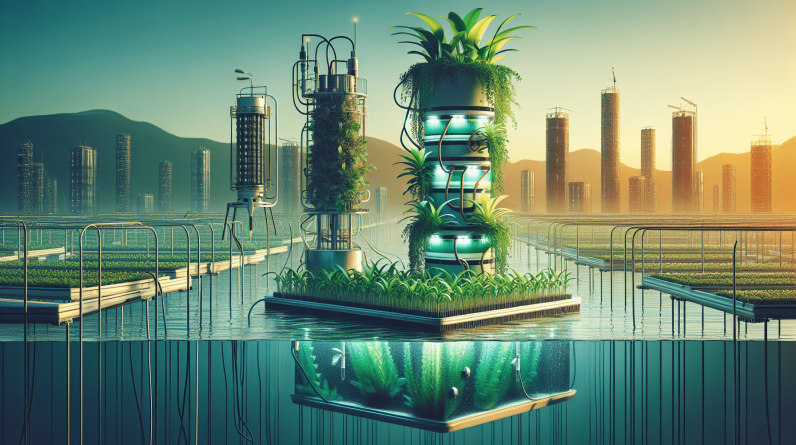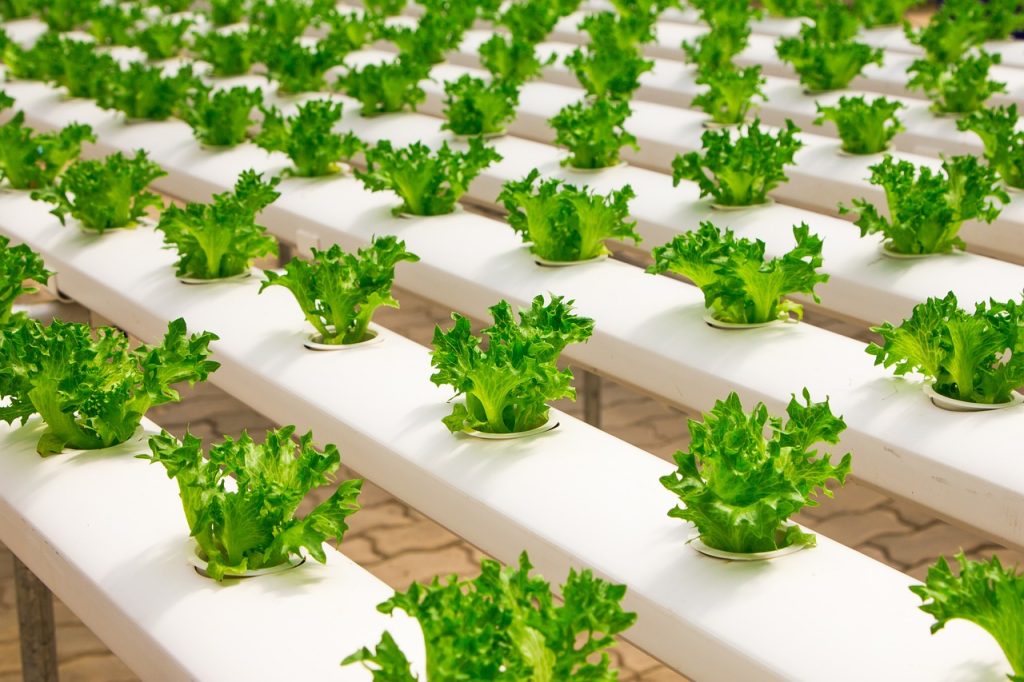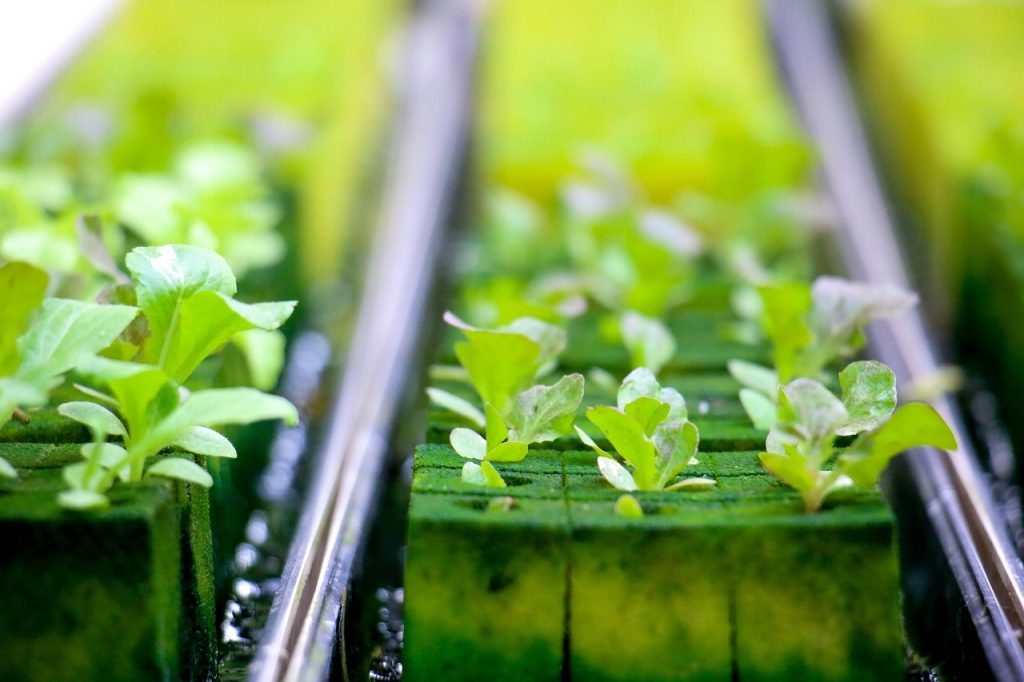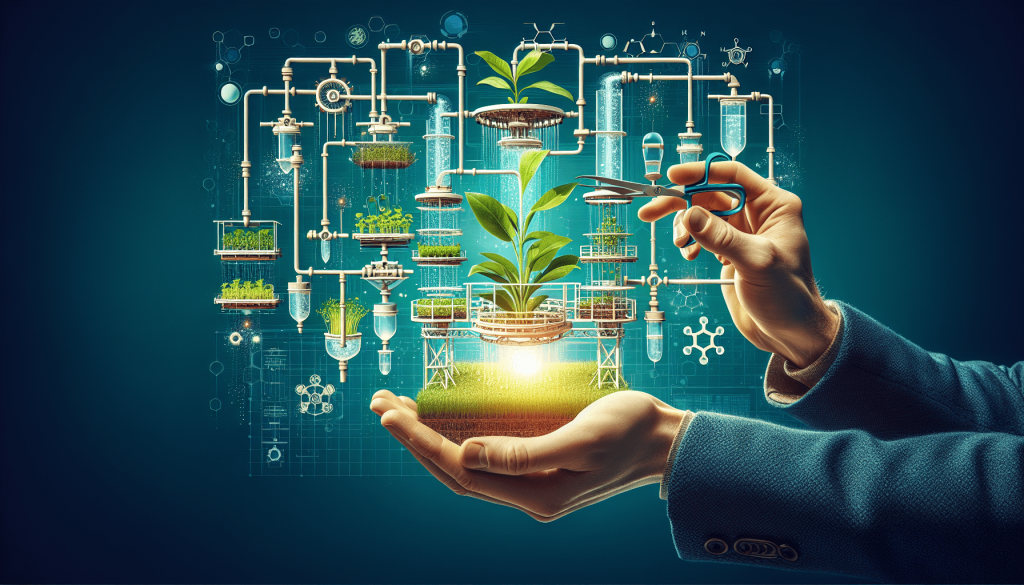
Have you ever wondered about the numerous types of hydroponic growing systems available? From nutrient film technique to deep water culture, there are various methods to explore for those seeking an alternative to traditional soil-based gardening. In this article, we will break down the key features and benefits of different hydroponic systems, providing you with the knowledge to embark on a greener, more sustainable growing journey. So, get ready to uncover the fascinating world of hydroponics and discover the perfect system for your indoor garden.

Nutrient Film Technique (NFT) System
Overview
The Nutrient Film Technique (NFT) System is a popular hydroponic growing system that uses a thin film of nutrient-rich water to grow plants. This system is designed to continuously circulate a shallow stream of nutrient solution over the plant roots, providing them with the essential nutrients they need for growth. NFT systems are commonly used for growing small herbs, lettuces, and other leafy greens.
How It Works
In an NFT system, plants are typically grown in long, narrow channels with a slight downward slope. The nutrient solution is pumped continuously through these channels, forming a thin film that flows over the roots of the plants. The roots are suspended in the air and are constantly exposed to the nutrients in the film, allowing for optimal nutrient uptake. The excess solution is then collected and recycled back into the system.
Advantages
One of the main advantages of the Nutrient Film Technique system is its efficiency in water and nutrient usage. Since the solution is continuously circulated, it eliminates the need for large amounts of water and fertilizers. NFT systems also promote healthier root development, as the thin film of nutrient solution allows for increased oxygen exposure. Additionally, this system allows for easy access to plants and requires minimal manual labor.
Disadvantages
However, there are some limitations to consider with the NFT system. One potential drawback is its reliance on electricity to pump and circulate the nutrient solution. In the event of a power outage or equipment failure, the plants could suffer from lack of nutrients and water. Another challenge is the need for careful monitoring of the system, as any blockages or imbalances in the flow of the nutrient solution can quickly impact plant health. Lastly, NFT systems may not be suitable for larger, heavier plants that require more support.
Deep Water Culture (DWC) System
Overview
The Deep Water Culture (DWC) System is a simple and effective hydroponic system that involves suspending plant roots in oxygenated nutrient-rich water. This system is often used for growing larger plants such as tomatoes, peppers, and cucumbers.
How It Works
In a DWC system, plants are placed in floating rafts or net pots, with their roots submerged in aerated nutrient solution. The oxygenation of the water is crucial in preventing root rot and allowing for optimal nutrient absorption. Air pumps and air stones are typically used to provide a constant flow of oxygen to the root zone. The nutrient solution is continuously recirculated to ensure the plants receive a constant supply of nutrients.
Advantages
The Deep Water Culture system offers several advantages, including easy setup and low maintenance requirements. It provides excellent aeration to the root zone and promotes rapid plant growth. DWC systems also use water efficiently, as the water is recirculated instead of being continuously replenished. This system is particularly suitable for larger plants due to the ample space available for root expansion.
Disadvantages
One potential disadvantage of the DWC system is the risk of power outages or equipment failures, as plants rely on continuous aeration for their survival. If the air pump stops functioning, plants may suffer from oxygen deprivation. Additionally, the direct exposure of the roots to the nutrient solution can make the plants more susceptible to root diseases and infections. The DWC system also requires frequent monitoring of nutrient levels to prevent imbalances.
Drip System
Overview
The Drip System, also known as the top-feed system, is a widely used hydroponic growing system that delivers nutrient solution directly to the plants’ root zone through drip emitters. This system offers versatility and precision, making it suitable for a wide range of plants.
How It Works
In a drip system, a pump is used to push the nutrient solution through a network of tubes and emitters. The emitters are strategically placed near the plants’ root zones, which allow for precise delivery of water and nutrients. The excess solution is collected and recycled back into the system, minimizing waste. Drip systems can be customized depending on the plant’s water and nutrient requirements, making it a flexible choice for hydroponic gardening.
Advantages
The Drip System provides several benefits for hydroponic growers. It allows for precise control over the delivery of water and nutrients, ensuring that plants receive the necessary resources without any wastage. The flexibility of the system also makes it suitable for a wide variety of plant types. Drip systems are relatively easy to set up, and maintenance requirements are minimal. Additionally, this system can be automated, reducing the need for constant monitoring and manual intervention.
Disadvantages
Despite its advantages, the Drip System has a few drawbacks to consider. It requires a reliable power source to operate the pump continuously, and any power outages could potentially harm the plants. Drip emitters can occasionally become clogged, leading to uneven water distribution or blockages within the system. This system also requires regular inspection to ensure that the emitters are functioning correctly and that the plant roots are not overly saturated.
Aeroponic System
Overview
The Aeroponic System is an innovative hydroponic growing system that suspends plant roots in a mist environment, providing them with optimal oxygenation and nutrient absorption. This system is known for its efficiency and ability to promote rapid plant growth.
How It Works
In an aeroponic system, plants are usually suspended in net pots or foam inserts, allowing the roots to hang freely in the air. A fine mist of nutrient solution is periodically sprayed onto the roots, providing them with both moisture and nutrients. The mist is typically created by using high-pressure sprayers or ultrasonic devices. The excess solution is collected and recirculated, ensuring minimal wastage.
Advantages
The Aeroponic System offers several advantages that make it a popular choice for hydroponic gardening. It promotes rapid plant growth and higher yields due to the increased oxygenation and nutrient absorption in the root zone. Since the roots are exposed to the air, they have a higher oxygen supply, which aids in healthy root development. This system also requires less water compared to traditional growing methods, making it an environmentally friendly option.
Disadvantages
One of the main disadvantages of the Aeroponic System is its complexity and higher maintenance requirements. The misting components need regular cleaning to prevent clogging, and any blockages can quickly affect the plant’s health. Additionally, aeroponic systems are susceptible to power outages, as plants heavily rely on the misting system for their survival. In the event of equipment failure, the plants could suffer from lack of nutrients and moisture.

Wick System
Overview
The Wick System is a passive hydroponic growing system that relies on the capillary action of a wick to deliver water and nutrients to the plant roots. This system is simple and inexpensive, making it ideal for beginners or small-scale growers.
How It Works
In a wick system, plants are typically placed in containers filled with a growing medium such as perlite or coconut coir. A wick, usually made of cotton or nylon, connects the nutrient solution reservoir to the growing medium. The wick draws up the solution into the growing medium through capillary action, providing the roots with water and nutrients. Excess solution can be collected and recycled or allowed to drain out.
Advantages
The Wick System offers several advantages, including its simplicity and low cost. It requires no electricity or moving parts, making it a passive system that operates on its own. The wick provides a slow and consistent delivery of water and nutrients to the plants’ roots, reducing the risk of over or under-watering. This system is also highly portable and can be easily set up in various locations.
Disadvantages
However, the Wick System has some limitations to consider. The capillary action of the wick can only push the solution a certain distance, limiting the overall size and growth potential of the plants. The rate of nutrient absorption can also be slower compared to other systems, resulting in slower plant growth. Additionally, the wick itself can occasionally become clogged or degrade over time, requiring regular maintenance and replacement.
Ebb and Flow (Flood and Drain) System
Overview
The Ebb and Flow System, also known as the Flood and Drain System, is a popular hydroponic growing system that involves periodically flooding the plant roots with nutrient solution and then allowing the excess to drain away. This system provides plants with ample water and nutrient absorption while allowing for proper aeration.
How It Works
In an Ebb and Flow system, plants are typically placed in trays or pots filled with a growing medium. A pump is used to flood the tray with nutrient solution, submerging the roots. After a predetermined period, the excess solution is drained back into the reservoir, allowing the roots to be exposed to air. This cycle is repeated several times a day, providing the roots with nutrients and oxygen.
Advantages
The Ebb and Flow System offers several advantages for hydroponic growers. It provides a high level of control over the nutrient and water supply, ensuring optimal plant growth. The periodic flooding and draining help improve oxygenation to the root zone, promoting healthier root development. This system is also relatively easy to set up and can accommodate a wide range of plant sizes and types.
Disadvantages
Despite its advantages, the Ebb and Flow System does have some drawbacks. The reliance on a pump and timer means that power outages or equipment failures can be detrimental to plant health. If the pump stops functioning, the plants may suffer from inadequate nutrient absorption or oxygenation. Additionally, the periodic flooding and draining can result in variable moisture levels in the root zone, potentially leading to root diseases or fungus growth. Regular monitoring and maintenance are necessary to prevent such issues.

Vertical Farming System
Overview
The Vertical Farming System is a unique approach to hydroponic gardening that maximizes space utilization by growing plants vertically. This method is well-suited for urban environments or areas with limited land availability.
How It Works
In a vertical farming system, plants are arranged in vertically stacked layers or towers. Each layer contains multiple shelves or racks to accommodate a large number of plants. The plants are typically grown in a soilless medium or with their roots suspended in nutrient-rich water. Artificial lighting is commonly used to provide the necessary light energy for plant growth in indoor settings. This system allows for efficient use of vertical space and maximizes crop yield per square foot.
Advantages
The Vertical Farming System offers several advantages for urban and indoor growers. It allows for higher crop yields compared to traditional farming methods, given its ability to stack multiple layers of plants. This system also provides better control over environmental factors such as temperature, humidity, and lighting, optimizing plant growth. Vertical farming can be implemented in various settings, including warehouses, greenhouses, or even in residential spaces, making it a versatile and sustainable solution for food production.
Disadvantages
Despite its potential, the Vertical Farming System has some limitations to consider. The initial setup costs can be high, primarily due to the need for artificial lighting and advanced climate control systems. Maintaining adequate lighting and ensuring uniform plant growth across multiple layers also requires meticulous planning and monitoring. Additionally, the reliance on electricity for lighting and other equipment means that power interruptions can have a significant impact on the plants’ well-being.
Aquaponics System
Overview
The Aquaponics System is a fascinating integration of aquaculture (fish farming) and hydroponics. This system creates a symbiotic relationship between plants and fish, where fish waste provides nutrients for the plants, and the plants filter the water for the fish.
How It Works
In an aquaponics system, fish are typically kept in a tank or pond, with their waste generating ammonia-rich water. This water is then pumped to grow beds where plants are cultivated in a hydroponic setup. The plants absorb the nutrients from the fish waste, effectively filtering the water. The filtered water is then returned to the fish tank, creating a closed-loop system. The combination of fish and plants creates a natural ecosystem that benefits both components.
Advantages
The Aquaponics System offers several advantages that make it an increasingly popular choice for sustainable farming. It eliminates the need for synthetic fertilizers, as the fish waste serves as a natural source of nutrients for plant growth. This system requires less water compared to traditional agriculture, as the water is continuously recycled. Aquaponics also provides a dual harvest of both fish and crops, increasing overall productivity. Additionally, the system is environmentally friendly and reduces the risk of nutrient pollution in water bodies.
Disadvantages
One potential disadvantage of the Aquaponics System is its complexity and higher maintenance requirements. Balancing the fish and plant needs in terms of water pH, nutrient levels, and temperature can be challenging. Fish health and water quality must be closely monitored and maintained to ensure optimal conditions for both components. Additionally, any disruptions in the system’s delicate balance, such as fish disease outbreaks or plant nutrient deficiencies, can have a cascading effect on overall system health.

Dutch Bucket System
Overview
The Dutch Bucket System, also known as the Bato Bucket System, is a hydroponic system that utilizes individual buckets or containers to grow plants. This system is commonly used for larger plants such as tomatoes, cucumbers, and peppers.
How It Works
In a Dutch Bucket System, plants are typically grown with their roots suspended in a growing medium, like perlite or coconut coir, within individual buckets or containers. Each bucket is connected to a central reservoir that contains the nutrient solution. A drip irrigation system is used to periodically deliver the nutrient solution directly to the plants’ root zone. The excess solution is allowed to drain away, preventing root saturation. Continuous recirculation of the solution ensures that plants receive a constant supply of nutrients.
Advantages
The Dutch Bucket System offers several advantages for hydroponic growers, particularly for larger plants. It provides excellent support and stability for plants, allowing them to develop strong root systems. The individual buckets or containers allow for easy management and customization of nutrient levels for each plant. This system also promotes efficient water and nutrient usage, as the excess solution can be collected and recycled. Additionally, the Dutch Bucket System is relatively easy to set up and maintain.
Disadvantages
However, there are some limitations to consider with the Dutch Bucket System. The continuous recirculation of the nutrient solution can increase the risk of nutrient imbalances or salt build-up over time. Regular monitoring and adjustment of nutrient levels are necessary to prevent such issues. Additionally, the system’s reliance on electricity for the pump and irrigation system means that power outages or equipment failures can be detrimental to plant health. Maintaining the proper balance of water and nutrients is essential for optimal plant growth.
Water Culture System
Overview
The Water Culture System, also known as the Floating Raft System or Deep Floating System, is a simple and cost-effective hydroponic growing system. This system involves suspending plant roots in a nutrient-rich solution, allowing for uninterrupted access to water and nutrients.
How It Works
In a Water Culture System, plants are typically grown on floating rafts or foam boards that are placed on top of the nutrient solution. The roots hang freely in the solution, absorbing the necessary water and nutrients directly. Air stones or diffusers are often used to provide continuous aeration to the root zone, ensuring optimal oxygenation. The solution is not recirculated in this system, and it is typically changed periodically to maintain nutrient balance.
Advantages
The Water Culture System offers several advantages, particularly for growers looking for a low-cost and straightforward hydroponic option. It requires minimal equipment and setup, making it ideal for beginners or small-scale growers. The continuous access to water and nutrients allows for rapid plant growth and high yields. This system is also less prone to certain issues such as clogged emitters or pump failures, reducing the risk of plant damage.
Disadvantages
One potential disadvantage of the Water Culture System is the need for frequent monitoring and nutrient solution changes. Nutrient imbalances can occur over time if the solution is not adequately maintained, leading to poor plant health. Additionally, plants grown in this system may have limited root access to oxygen, potentially hindering root development. The lack of recirculation in the system also means that it may require more water compared to other hydroponic systems.
With the exploration of these different types of hydroponic growing systems, you now have a comprehensive understanding of their features, advantages, and disadvantages. Each system offers unique benefits for specific plant types and growing conditions. Whether you choose the simplicity of the Wick System or the innovation of the Vertical Farming System, hydroponics provides an efficient, sustainable, and exciting approach to modern agriculture. Happy growing!








